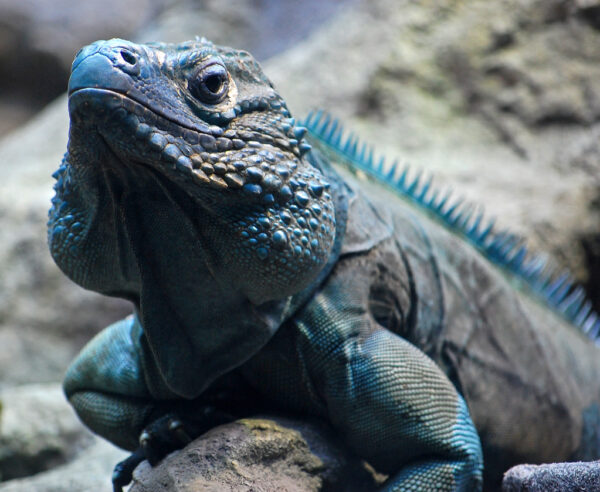The Grand Cayman Blue Iguana (Cyclura lewisi) is a large, ground-dwelling lizard found only on Grand Cayman Island. It is a powder-blue species ranging from gray to bright blue. This species was once critically endangered, but its population has increased significantly in recent years due to conservation efforts.
Physical Traits
The Grand Cayman Blue Iguana is the largest native land animal of Grand Cayman Island. It can grow up to 5 feet long and weigh up to 20 pounds. Its body is covered with scales and spines, and its toes are articulated for efficient climbing on rocks and trees. The males have larger heads than the females, and their coloration tends to be brighter than the females’.
Life Span
The average life span of the Grand Cayman Blue Iguana is around 15-20 years in captivity, while in the wild, it can reach up to 25 years or more.
Habitat
The Grand Cayman Blue Iguana lives in dry shrubland habitats near rocky outcrops or limestone cliffs. They prefer areas with plenty of vegetation for food and shelter from predators such as cats and dogs.
Diet
Grand Cayman Blue Iguanas are herbivores that feed mainly on natural vegetation such as leaves, flowers, fruits, cacti pads, and other plant material found within their habitat. They also occasionally eat insects such as beetles and crickets for additional protein intake.
Reproduction
Grand Cayman Blue Iguanas reach sexual maturity at around 4-5 years old. Breeding season typically occurs between April and August when they lay eggs in burrows dug into sandy soil near rocky outcrops or limestone cliffs. The female will lay 2-12 eggs that incubate for around 90 days before hatching each year in October- December.
Conservation Status
The Grand Cayman Blue Iguana was once critically endangered due to predation by feral animals such as cats and dogs and habitat destruction caused by human activities like development projects and agricultural practices. Thanks to conservation efforts by organizations like the International Reptile Conservation Foundation (IRCF) and the National Trust for the Cayman Islands (NTCI), this species’ population has increased significantly over the past few decades making it an ongoing conservation success story!
Interesting Facts
- The blue iguana’s scientific name, “Cyclura lewisi,” honors Dr. Thomas Barbour, who discovered this species in 1932 while researching reptiles in the Caribbean region!
- The blue iguana’s bright blue coloration is due to its diet, which includes pigments from certain plants that give it its unique hue!
- The blue iguanas’ mating ritual involves head bobbing displays by males towards females during breeding season!

